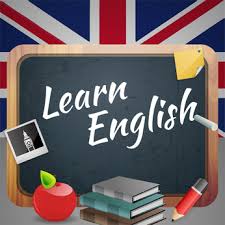Tugas Reading: Pearl Buck
Bacalah beberapa paragraf berikut dengan cermat, kemudian pilihlah jawaban
yang tepat dari pertanyaan - pertanyaan yang ada dibawahnya.
Passage 1
One of the most popular literary
figures in American literature is a woman who spent almost half of her long
life in China, a country on a continent thousands of miles from the United
States. In her lifetime she earned this country's most highly acclaimed
literary award: the Pulitzer Prize, and also the most prestigious form of
literary recognition in the world, the Nobel Prize for Literature. Pearl S.
Buck was almost a household word throughout much of her lifetime because of her
prolific literary output, which consisted of some eighty - five published
works, including several dozen novels, six collections of short stories,
fourteen books for children, and more than a dozen works of nonfiction. When
she was eighty years old, some twenty - five volumes were awaiting publication.
Many of those books were set in China, the land in which she spent so much of
her life. Her books and her life served as a bridge between the cultures of the
East and the West. As the product of those two cultures she became as the
described herself, "mentally bifocal." Her unique background made her
into an unusually interesting and versatile human being. As we examine the life
of Pearl Buck, we cannot help but be aware that we are in fact meeting three
separate people: a wife and mother, an internationally famous writer and a
humanitarian and philanthropist. One cannot really get to know Pearl Buck
without learning about each of the three. Though honored in her lifetime with
the William Dean Howell Medal of the American Academy of Arts and Letters in
addition to the Nobel and Pulitzer prizes. Pearl Buck as a total human being,
not only a famous author. is a captivating subject of study.
1. What
is the author's main purpose in the passage?
(A) To offer a criticism of the works of Pearl Buck.
(B) To illustrate Pearl Buck's views on Chinese literature
(C) To indicate the
background and diverse interests of Pearl Buck
(D) To discuss Pearl Buck's influence on the cultures of the
East and the West
2. According to
the passage, Pearl Buck was an unusual figure in American literature in that
she
(A) wrote extensively
about a very different culture
(B) published half of her books abroad
(C) won more awards than any other woman of her time
(D) achieved her first success very late in life
3. According to
the passage, Pearl Buck described herself as "mentally bifocal" to
suggest that she was
(A) capable of resolving the differences between two distinct
linguistic systems
(B) keenly aware of how the past could influence the future
(C) capable of producing literary works of interest to both
adults and children
(D) equally familiar with
two different cultural environments
Passage 2
When we accept the evidence of our
unaided eyes and describe the Sun as a yellow star, we have summed up the most
important single fact about it-at this moment in time.
It appears probable, however, that
sunlight will be the color we know for only a negligibly small part of the
Sun's history. Stars, like individuals, age and change. As we look out into
space, We see around us stars at all stages of evolution. There are faint
blood-red dwarfs so cool that their surface temperature is a mere 4,000 degrees
Fahrenheit, there are searing ghosts blazing at 100, 000 degrees Fahrenheit and
almost too hot to be seen, for the great part of their radiation is in the invisible
ultraviolet range. Obviously, the "daylight" produced by any star
depends on its temperature; today(and for ages to come) our Sun is at about
10,000 degrees Fahrenheit, and this means that most of the Sun's light is
concentrated in the yellow band of the spectrum, falling slowly in intensity
toward both the longer and shorter light waves.
That yellow "hump" will
shift as the Sun evolves, and the light of day will change accordingly. It is
natural to assume that as the Sun grows older, and uses up its hydrogen
fuel-which it is now doing at the spanking rate of half a billion tons a
second- it will become steadily colder and redder.
4. What is the
passage mainly about?
(A) Faint dwarf stars (B) The evolutionary cycle of the
Sun
(C) The Sun's fuel problem (D)
The dangers of invisible radiation
5. What does
the author say is especially important about the Sun at the present time?
(A) It appears yellow (B)
It always remains the same
(C) It has a short history (D)
It is too cold
6. Why are very
hot stars referred to as "ghosts"?
(A) They are short- lived.
(B) They are mysterious.
(C) They are frightening.
(D) They are nearly
invisible.
Passage 3
Steamships were first introduced into
the United States in 1807, and John Molson built the first steamship in
Canada(then called British North America) in 1809. By the 1830's dozens of
steam vessels were in use in Canada. They offered the traveler reliable
transportation in comfortable facilities-a welcome alternative to stagecoach
travel, which at the best of times could only be described as wretched. This
commitment to dependable river transport became entrenched with the investment
of millions of dollars for the improvement of waterways. which included the
construction of canals and lock systems. The Lachine and Welland canals. two of
the most important systems. were opened in 1825 and 1829, respectively. By the
time that Upper and Lower Canada were united into the Province of Canada in
1841. the public debt for canals was more than one hundred dollars per capita.
an enormous sum for the time. But it may not seem such a great amount if we
consider that improvements allowed steamboats to remain practical for most
commercial transport in Canada until the mid-- nineteenth century.
7. What is the
main purpose of the passage?
(A) To contrast travel by steamship and stagecoach
(B) To criticize the level of public debt in nineteenth -
century Canada -
(C) To describe the
introduction of steamships in Canada
(D) To show how Canada surpassed the United States in
transportation improvements
8. Which of the
following can be inferred from the passage about stagecoach travel in Canada in
the 1831's?
(A) It was reasonably comfortable. (B) It was extremely efficient.
(C) It was not popular. (D)
It was very practical.
9. According to
the passage, steamships became practical means of transportation in Canada
because of
(A) improvements in the
waterways (B) large subsidies from John
Molson
(C) a relatively small population (D) the lack of alternate means
Passage 4
Archaeology is a source of history,
not just a humble auxiliary discipline. Archaeological data are historical
documents in their own right, not mere illustrations to written texts. Just as
much as any other historian an archaeologist studies and tries to reconstitute
the process that has created the human world in which we live-and us ourselves
in so far as we are each creatures of our age and social environment.
Archaeological data are all changes in the material world resulting from human
action or more succinctly the fossilized results of human behavior. The sum
total of these constitute what may be called the archaeological record. This
record exhibits certain peculiarities and deficiencies the consequences of
which produce a rather superficial contrast between archaeological history and
the more familiar kind based upon written records.
Not all human behavior fossilizes.
The words I utter and you hear as vibrations in the air are certainly human
changes in the material world and may be of great historical significance. Yet
they leave no sort of trace in the archaeological records unless they are
captured by a dictaphone or written down by a clerk. The movement of troops on
the battlefield may "change the course of history", but this is
equally ephemeral from the archaeologist's standpoint. What is perhaps worse,
most organic materials are perishable. Everything made of wood. hide wool.
linen. grass hair. and similar materials will decay and vanish in dust in a few
years or centuries, save under very exceptional conditions. In a relatively
brief period the archaeological record is reduced to mere scraps of stone.
bone, glass. metal, and earthenware. Still modern archaeology, by applying
appropriate techniques and comparative methods. aided by a few lucky finds from
peat bogs. deserts. and frozen soils. is able to fill up a good deal of the
gap.
10. What is the
author's main purpose in the passage?
(A) To point out the importance of recent advances in
archaeology
(B) To describe an archaeologist’s education
(C) To explain how
archaeology is a source of history
(D) To encourage more people to become archaeologists







Komentar
Posting Komentar